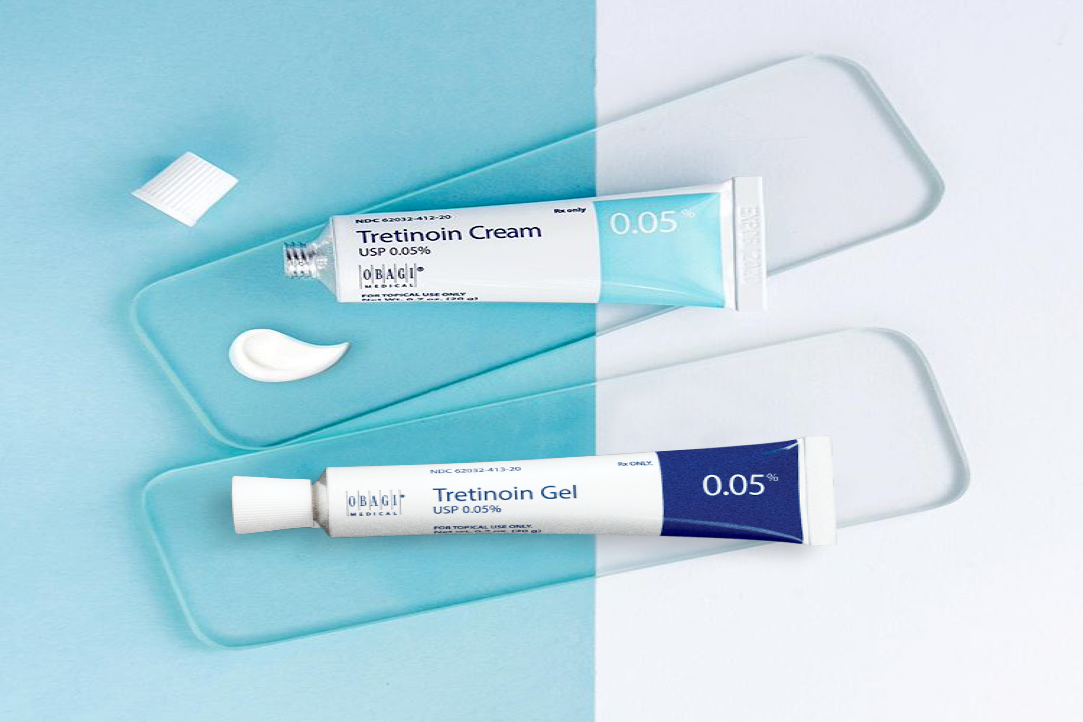Tretinoin And The Truth About It

Tretinoin is a derivative of vitamin A that has been converted to acid, also known by the name retinoic acid. Tretinoin is a DRUG, belonging to the group of dermatological drugs, not cosmetics that can be used arbitrarily. Tretinoin belongs to the family of retinoids.
In the retinoids family, there is also Retinol, and anti-aging ingredient that is no less than tretinoin. As you may not know, retinol and tretinoin both have the common name retinoids, they only differ in concentration:
Concentrations of Retinol present in cosmetics: 0.01%, 0.03%, 0.1%, 0.5% to 1%.
Concentrations of Tretinoin present in cosmetics: 0.025% - 0.05% - 0.1%.
Most in many parts of the world retinol is the optimal choice of many skincare believers because there is no need for a doctor's prescription, while Tretinoin can only be purchased when a doctor prescribes it. And what's more, the irritant ability of retinol is lower than that of tretinoin. (Retinol helps absorb into the skin and increase the regeneration of skin cells while supporting acne, pigmentation, freckles, wrinkles, and uneven skin improvement.)
Effects of Tretinoin
Tretinoin has the same effect as Retinol that supports acne treatment, reduces and heal acne, anti-aging, wrinkles and more.
However, Tretinoin is about 20 times more potent than Retinol. This means it can be more irritating than retinol.
So if you are a beginner you should start with retinol because of its lighter concentration and less irritation. Choose the right retinol product instead.
Tretinoin is about 20 times more potent than Retinol. This means it can be more irritating than retinol.
Let us go deeper in to the difference between Retinol and Tretinoin.
Retinol
- No prescription required
- Few side effects
- Can be used for a long time as a cosmetic
Tretinoin
- Need a prescription
- May cause many undesirable side effects
- Use only for as long as doctor recommends
In the case of deciding to use Tretinoin, you should do tests thoroughly before using it and have a complete, persistent skincare routine. For a number of reasons:
- Tretinoin is a drug that cannot be used freely as I said above.
- Tretinoin use can cause a mild inflammatory reaction leading to thickening of the papillae and keratosis. In the case of the wrong dose it will not work and may even intensify the inflammatory response, causing peeling and discomfort.
- Preparations with a high concentration of tretinoin can cause severe damage to the epidermis and cause acne burns.
- In cases of eczema, use with caution.
Side effects when using Tretinoin
The adverse effects associated with Tretinoin in particular and Retinoids in general are referred to as the "retinoids reaction" - including local manifestations on the site of exposure to the active substance. The most common side effects of using Tretinoin are local skin irritation symptoms, including peeling, burning, dry skin, redness, or blistering, according to the dermatological literature. These predictable reactions are under control and temporary. So, when you encounter these symptoms, don't panic - they tend to peak in intensity for the first month and then slowly decrease. At the same time, the above symptoms will also be minimized when you temporarily reduce the frequency of use, the dose of use and actively use moisturizers and restore the skin.
The adverse effects associated with using Tretinoin can be considered based on the following two levels.
⚠ Note: This scale is for reference only.
-
Level 1: Common symptoms (less severe)
- Itching, slightly burning skin
- Dry, flaky skin
- Mild red skin
- Feeling hot, skin stinging
- Purging
- Darkening skin
- Photosensitivity
-
Level 2: Severe symptoms (needing help from a doctor)
- Blistering
- Dermatitis
- The skin was burning non-stop
Common side effects will usually subside and stop completely after 1-2 weeks of use with adequate sunscreen and skin-regenerating products. If concentration decreases and frequency of use is dilated and skin is still not responding - negative reactions persist, discontinue use and consult a physician.
Note during use
- Breakout skin, weak skin, mixed creamy skin need to control acne and use recovery products for healthy skin before deciding to use Tretinoin.
- Tretinoin should not be used together with Benzoyl Peroxide.
- It is recommended to clean and dry the skin before using Tretinoin.
- For sensitive skin, if you use AHA/BHA, you should use it every other day, not at the same time.
- Avoid applying Tretinoin to the eye areas, near the nose, and lips.
- Routine using Retinoids should come with a moisturizing/restoring product.
- Always use sunscreen during skin care. Simultaneously grasp the principle of using as well as in combination with other active ingredients in the same skin care cycle.
Science is a field that changes and updates every day. Although Tretinoin has recorded a lot of research, in reality it needs flexibility when applied to the state of the user. I hope to have provided useful information about Tretinoin, helping you to make your own choices.
Sources:
- (Fitzpatrick’s Dermatology Volume 1 - Ninth Edition, Part 28: Topical and Systemic Treatments, Chapter 185: Retinoids
- C.B. Boswell MD (2006), “Skincare Science: Update on Topical Retinoids”, Aesthetic Surgery Journal, Volume 26, Issue 2, March 2006, Pages 233–239.
- Siddharth Mukherjee (2006), “Retinoids in the treatment of skin aging: an overview of clinical efficacy and safety”, Clinical Interventions in Aging, 1(4): 327–348.
- Paula’s choice Vietnam team (2020) “What is Tretinoin and Exposing the truth about Tretinoin” https://paulaschoice.vn/tretinoin-la-gi.html
Text by
Nguyen Ha
